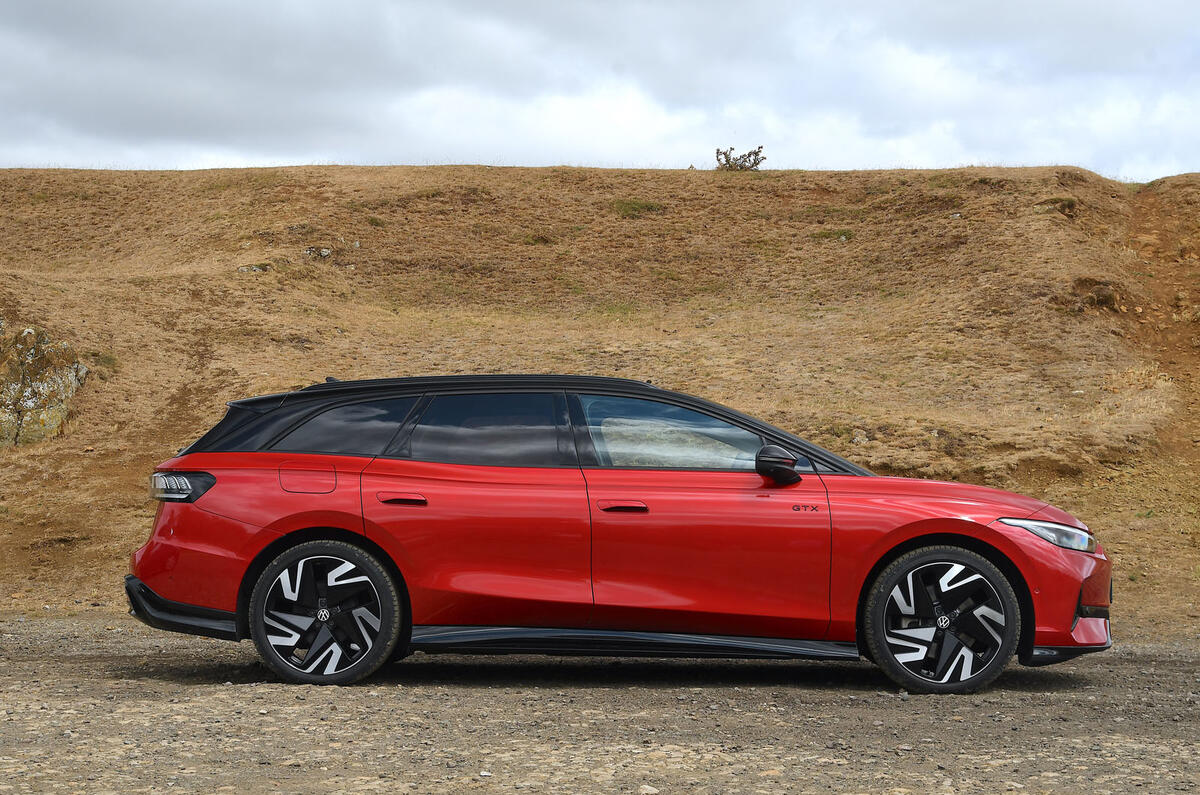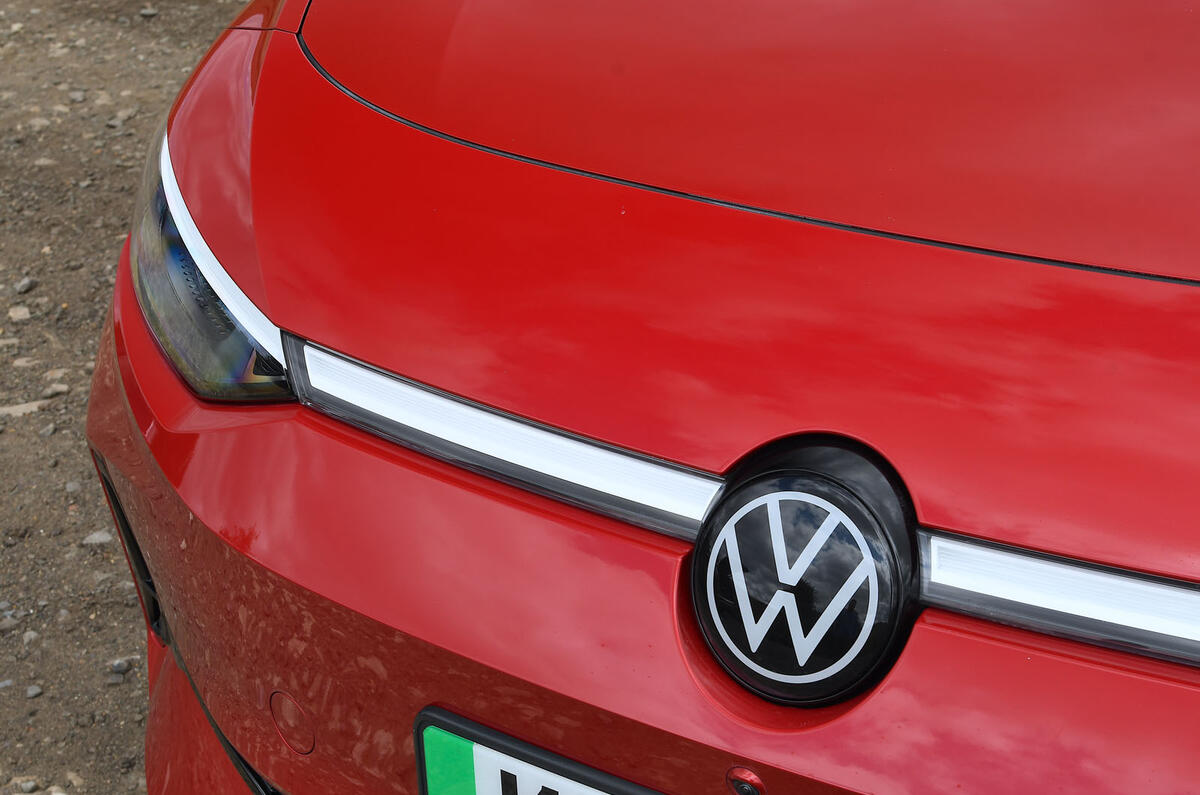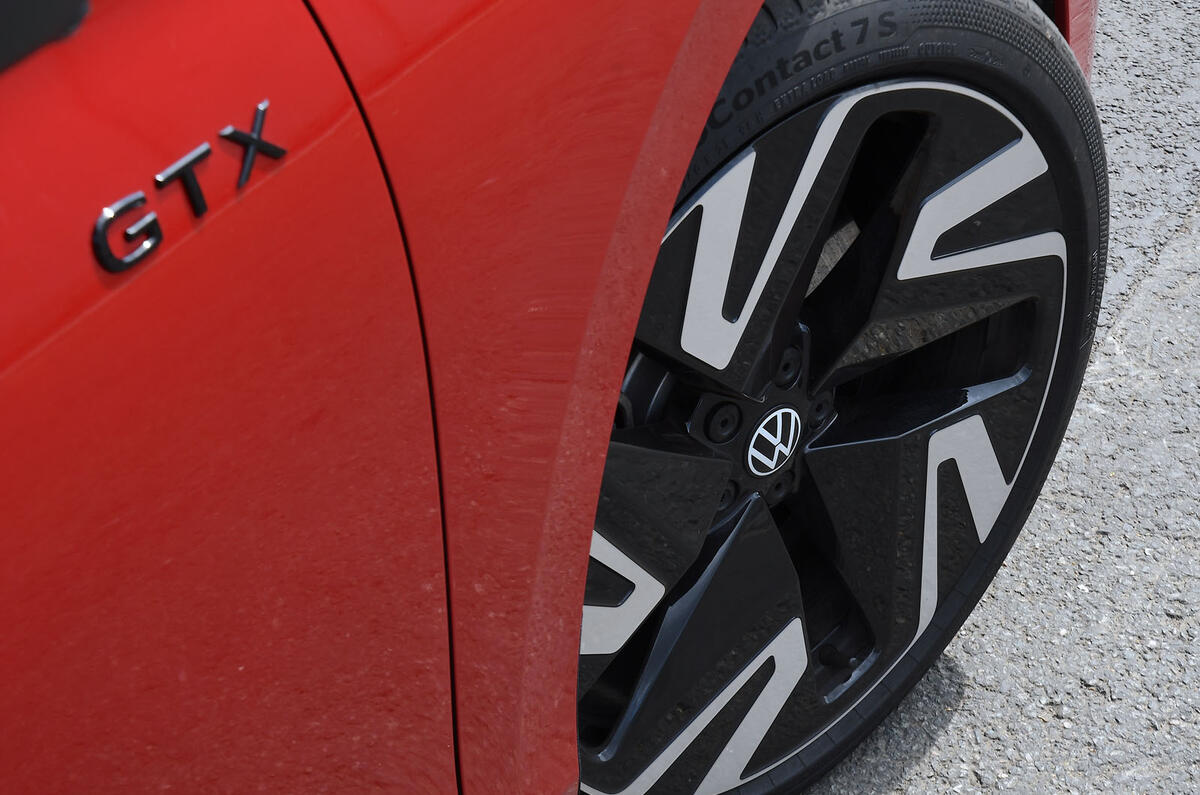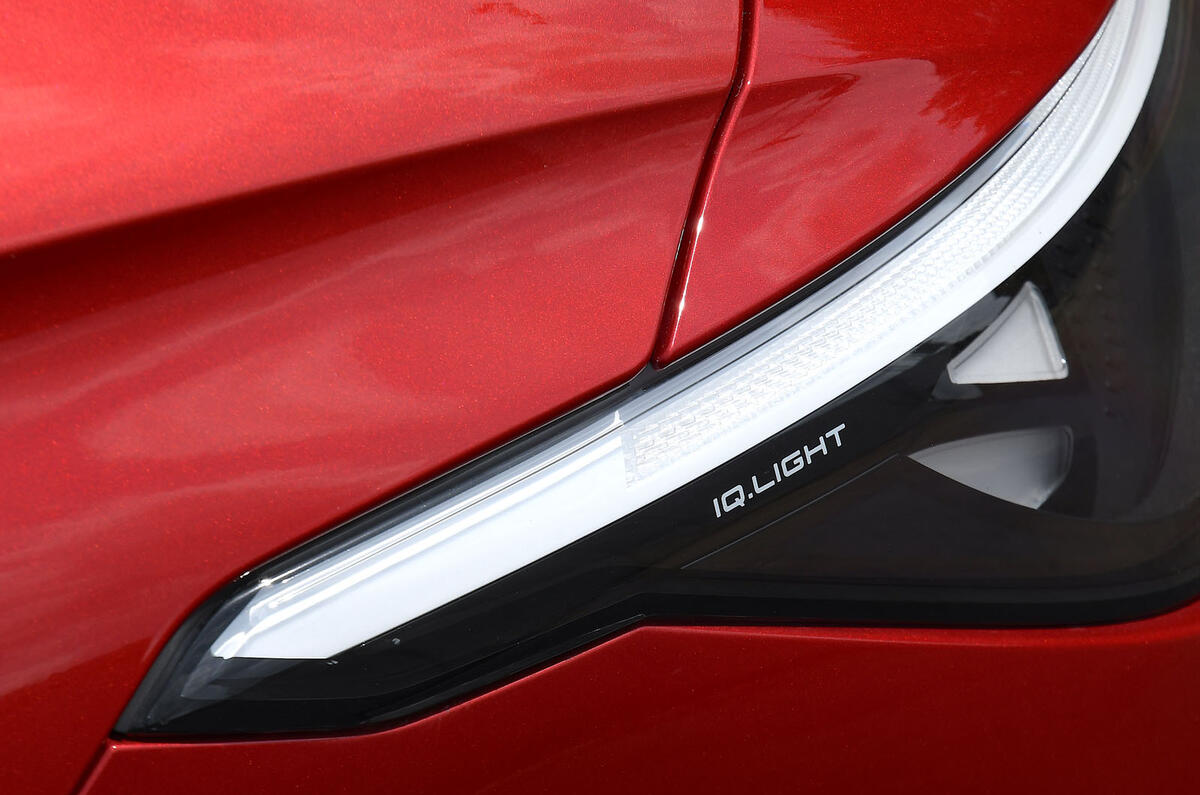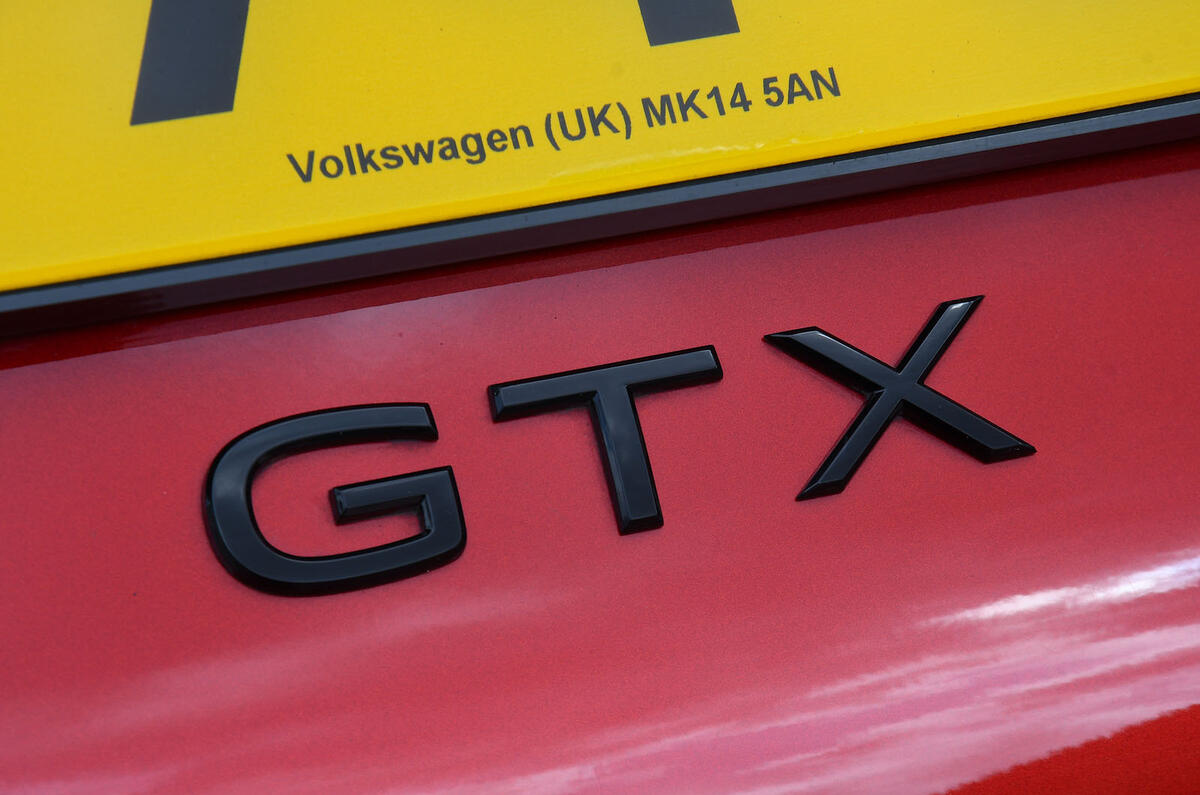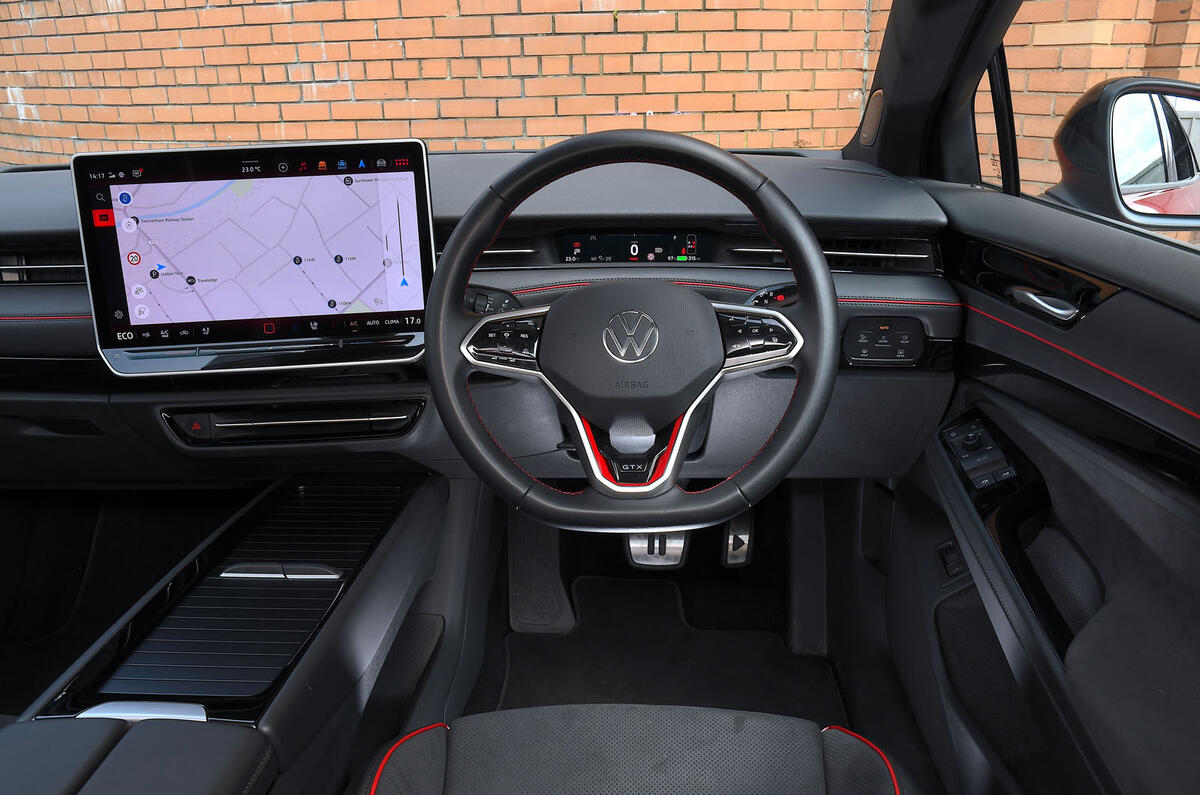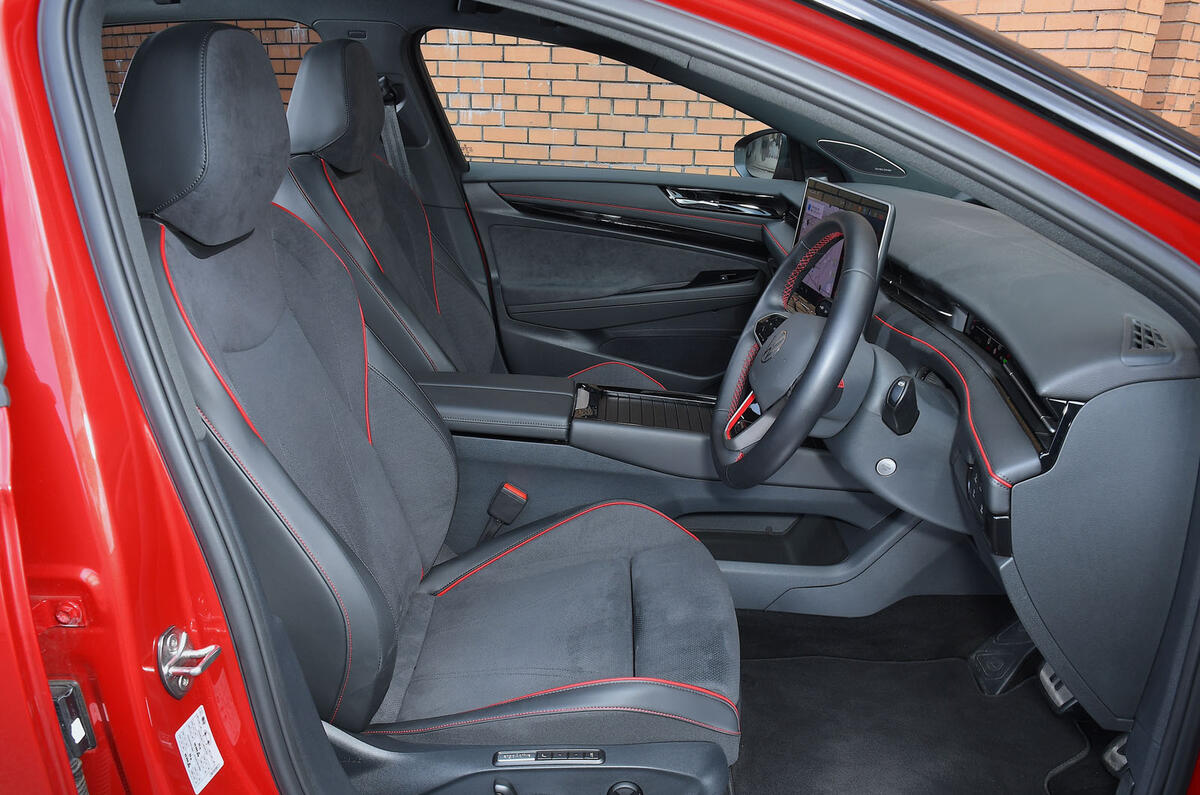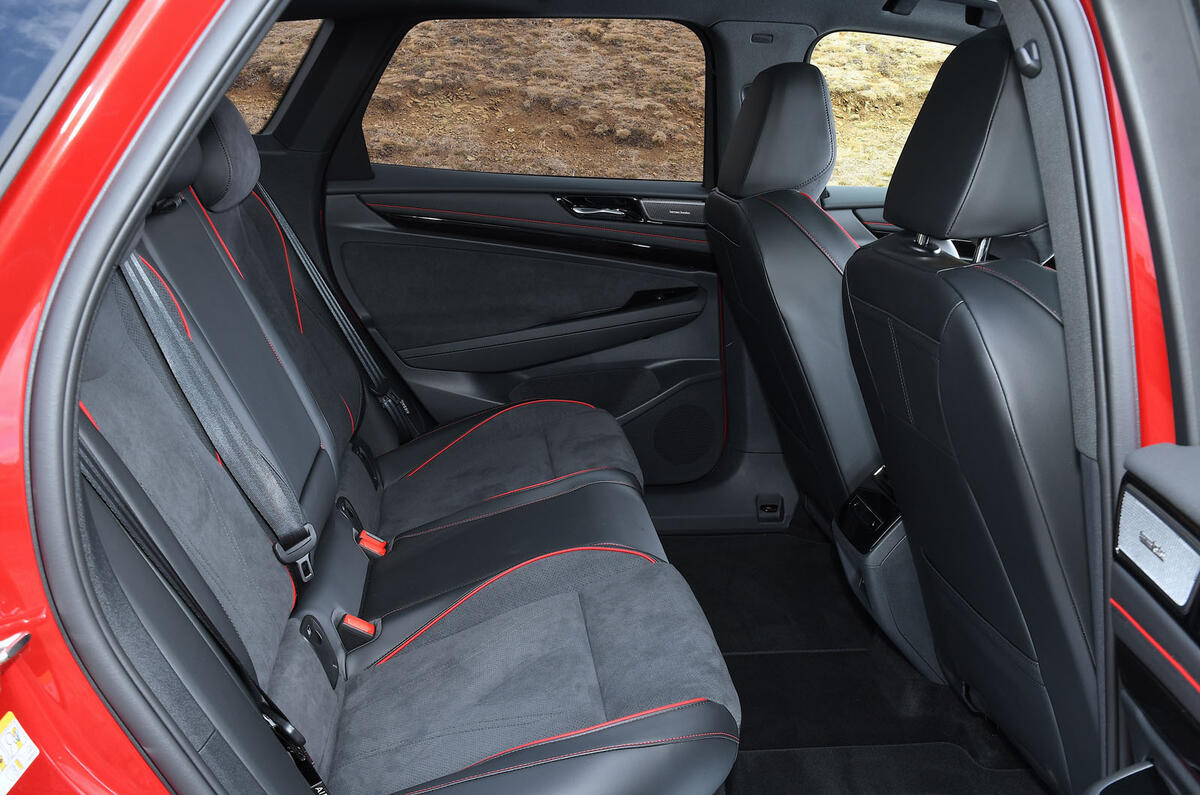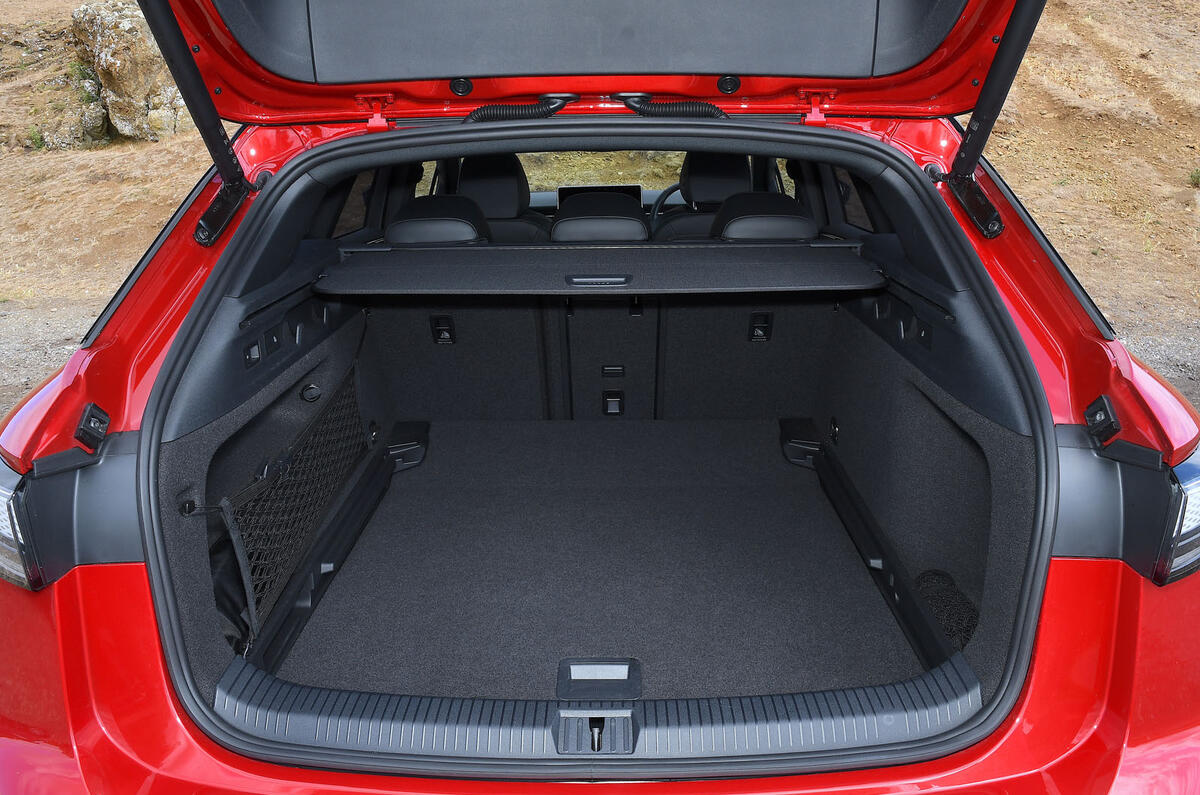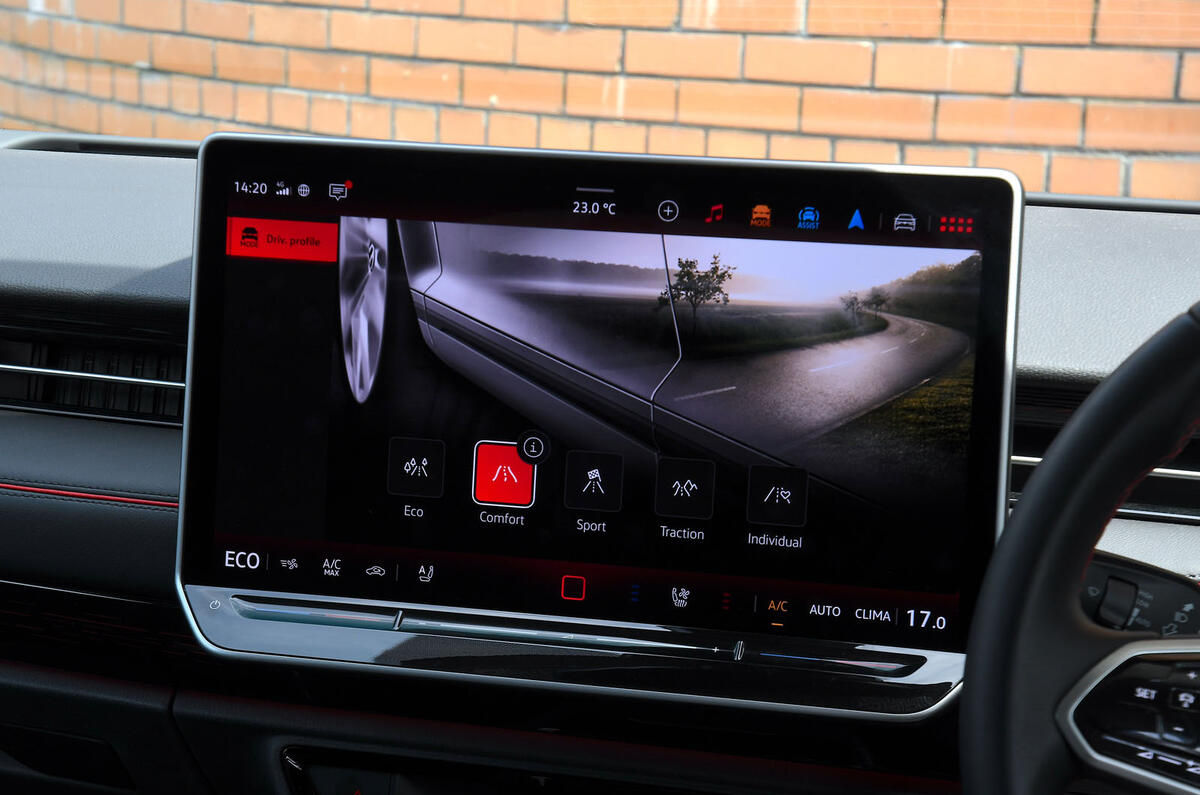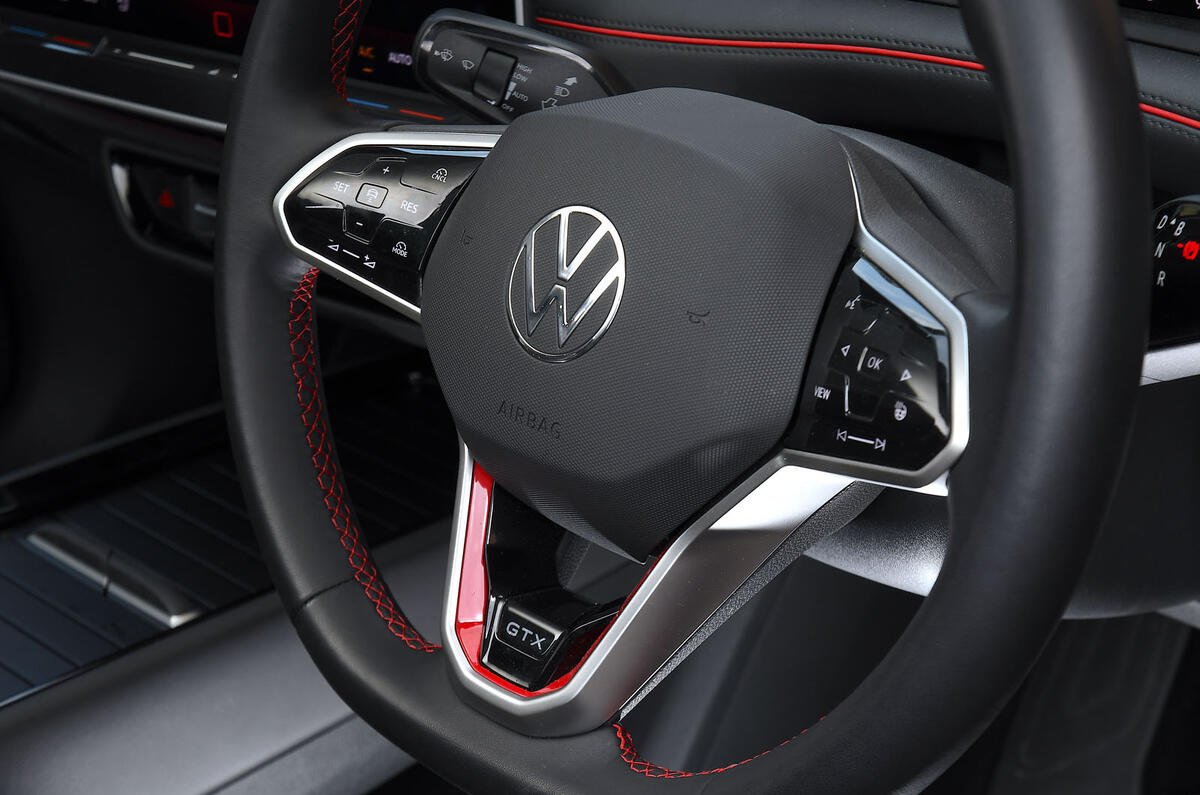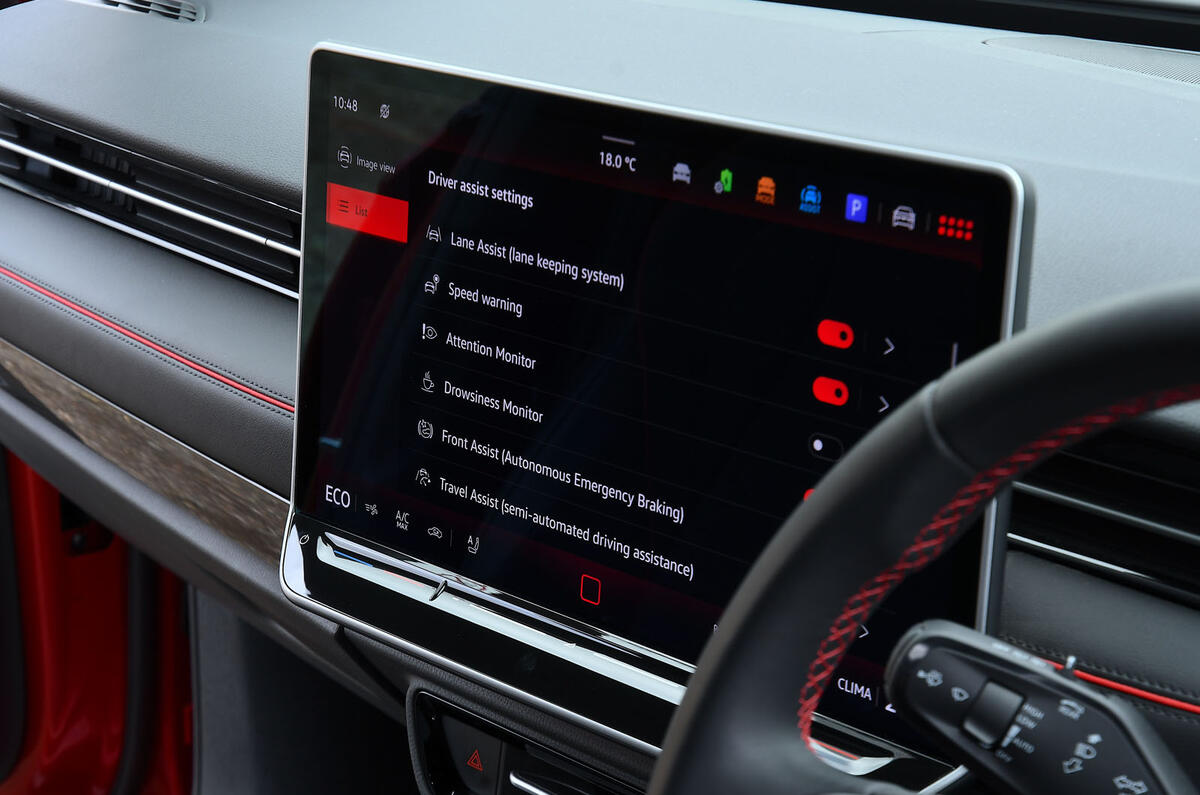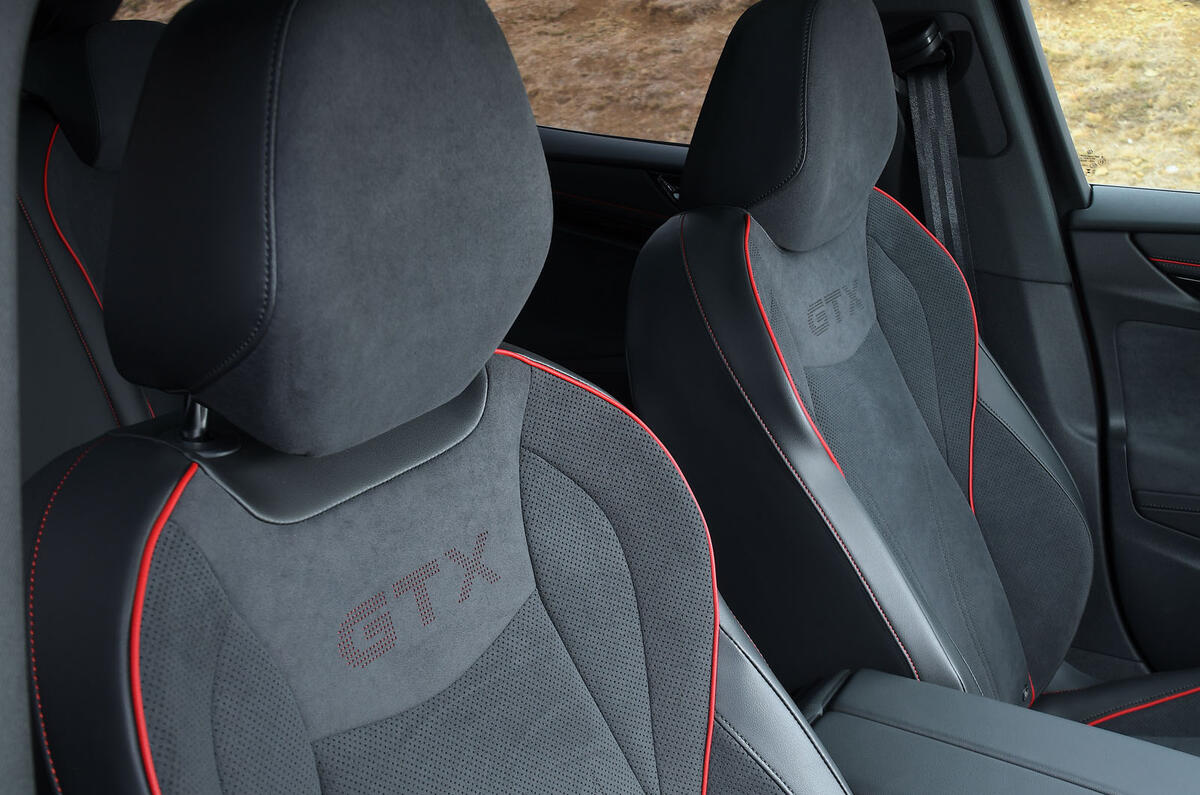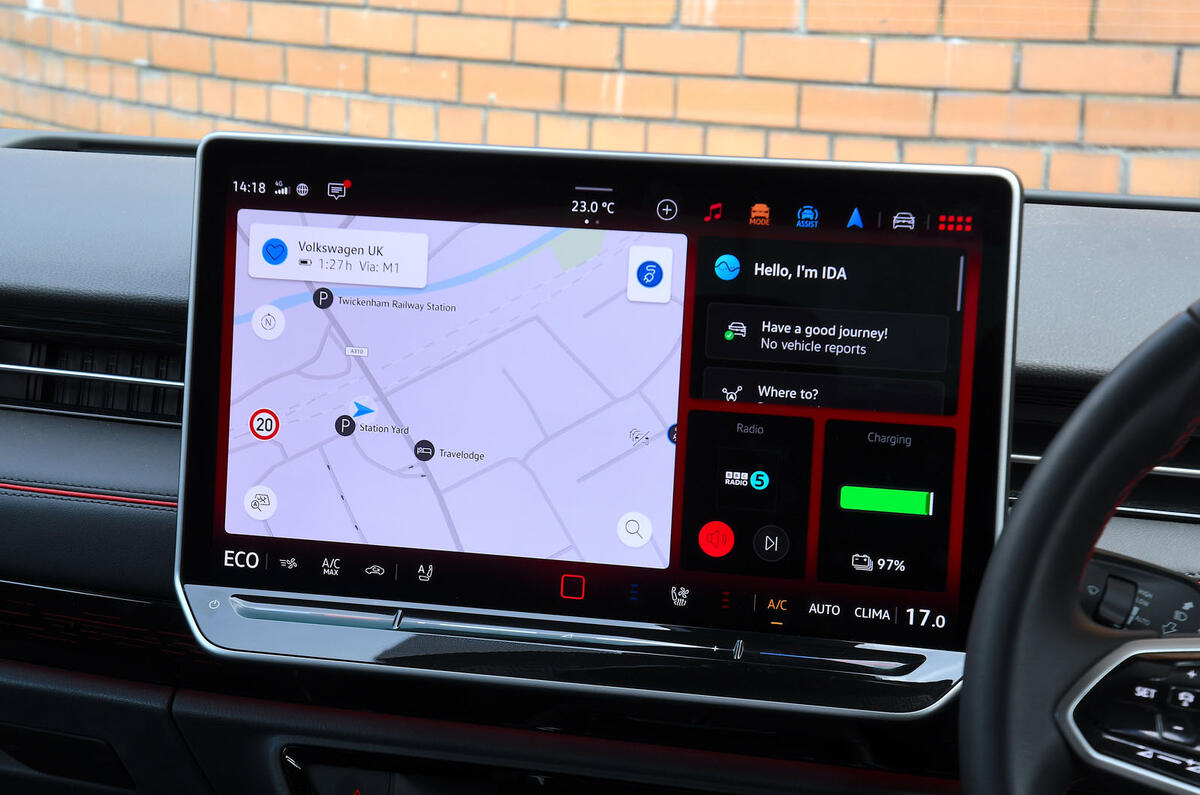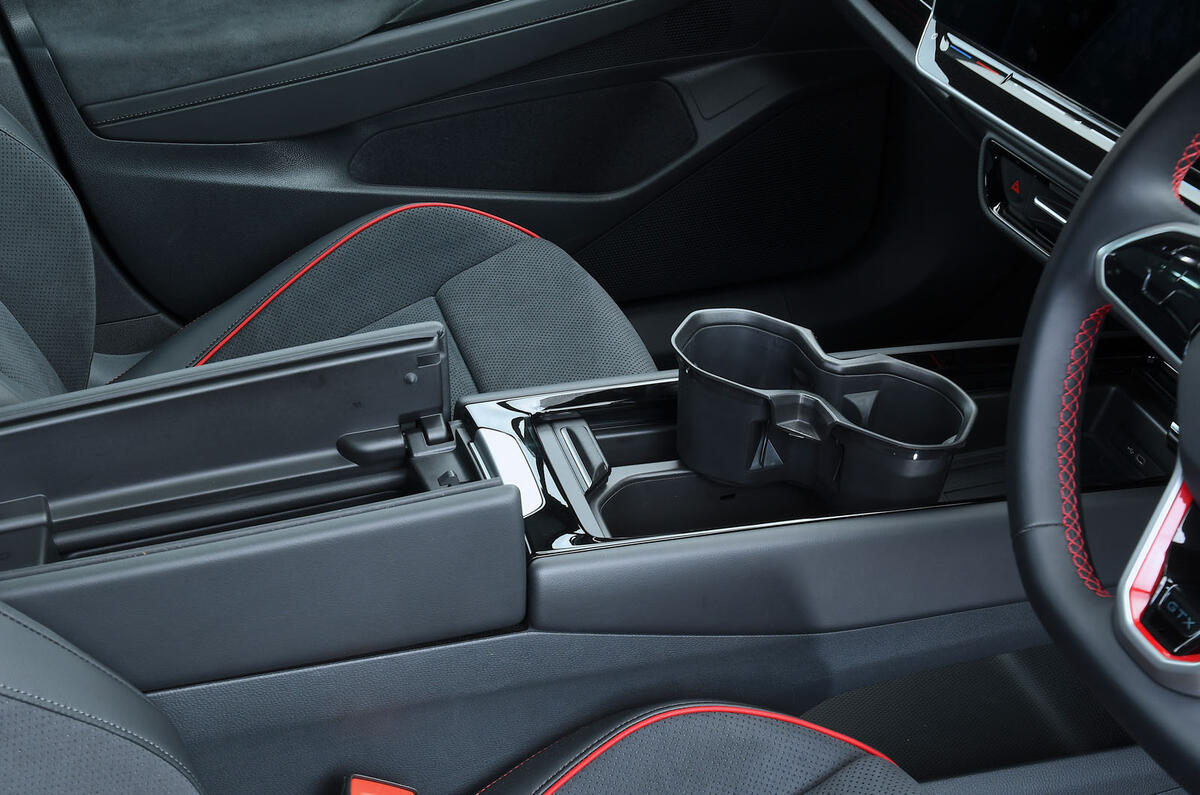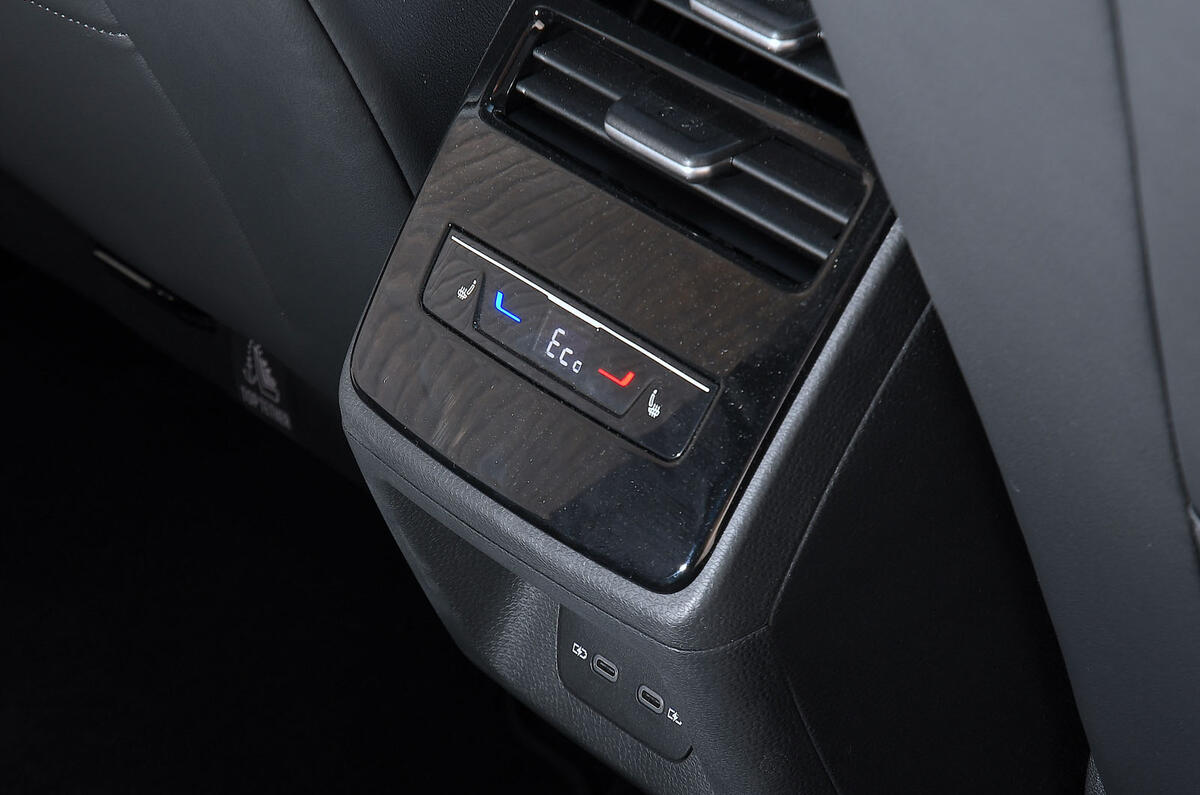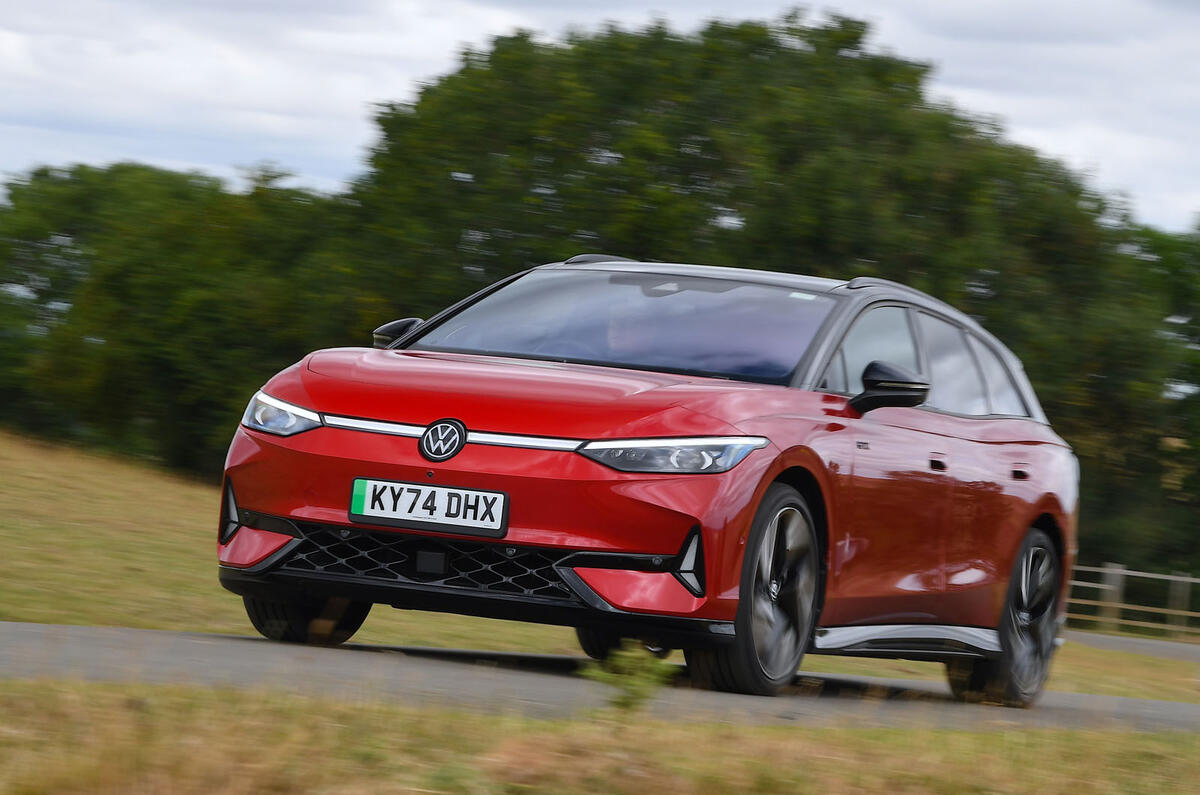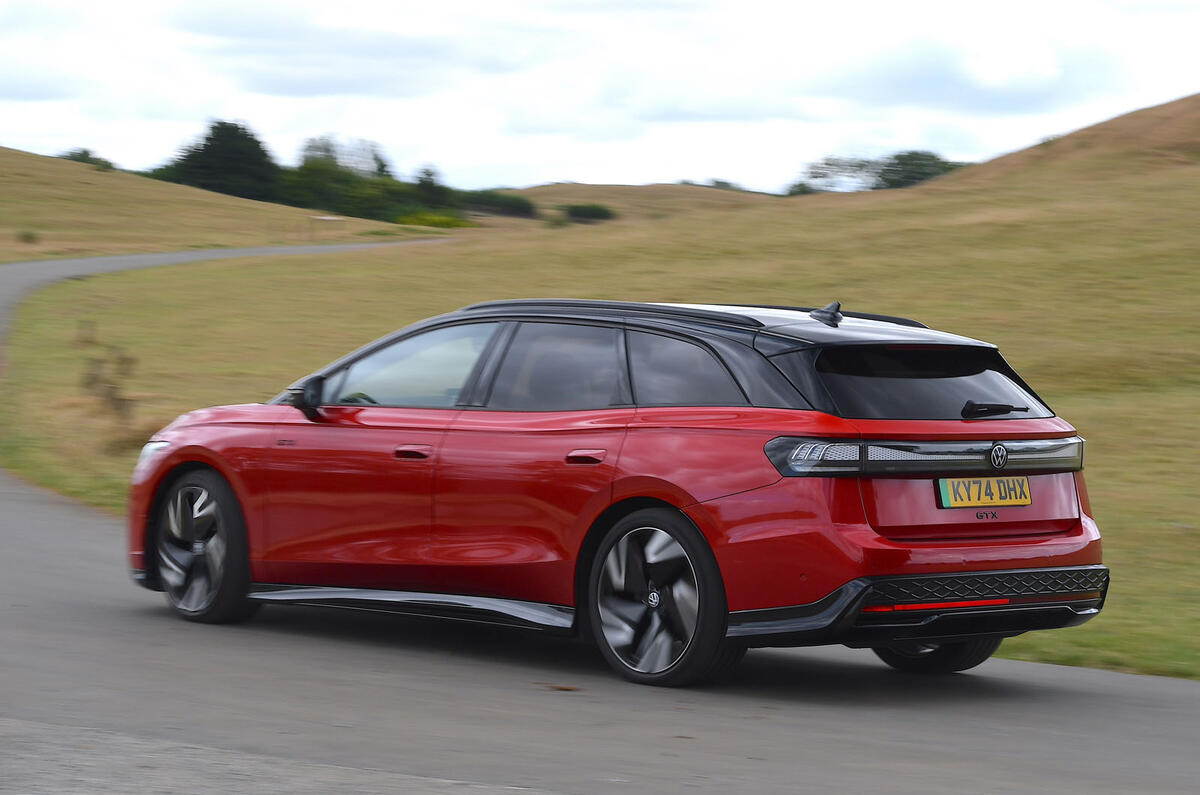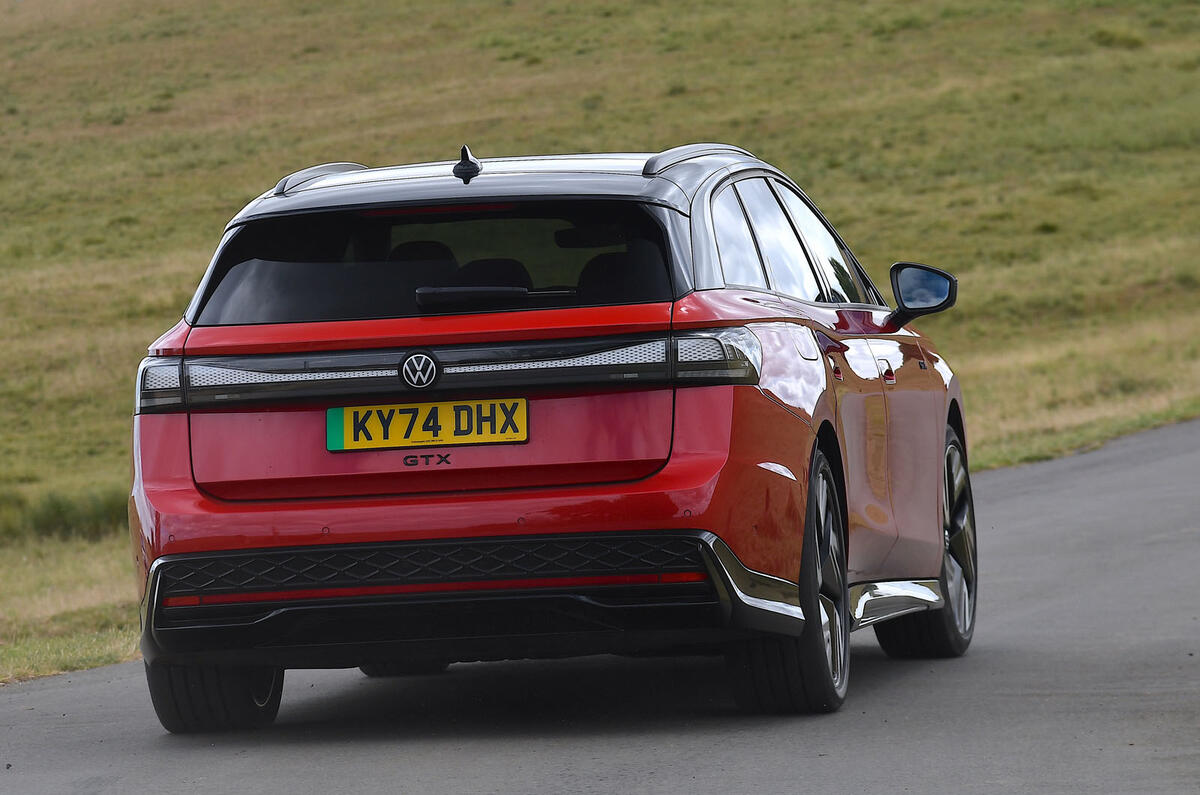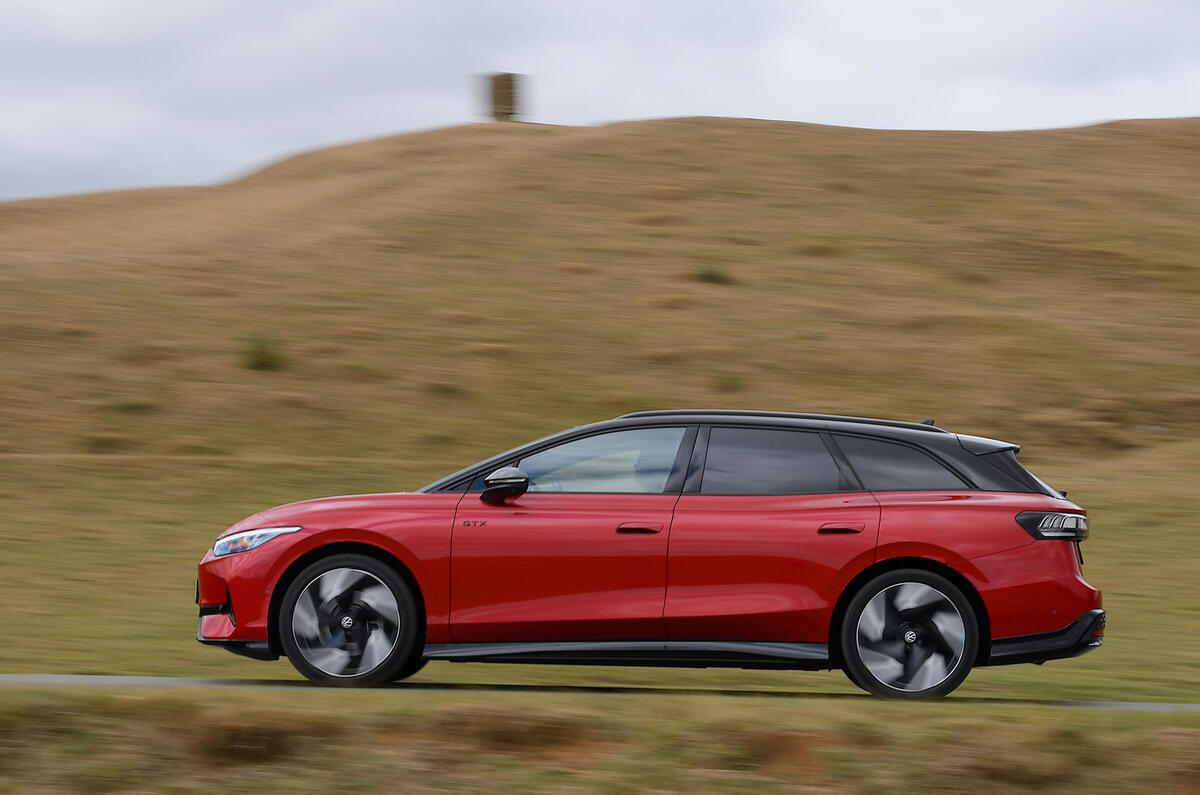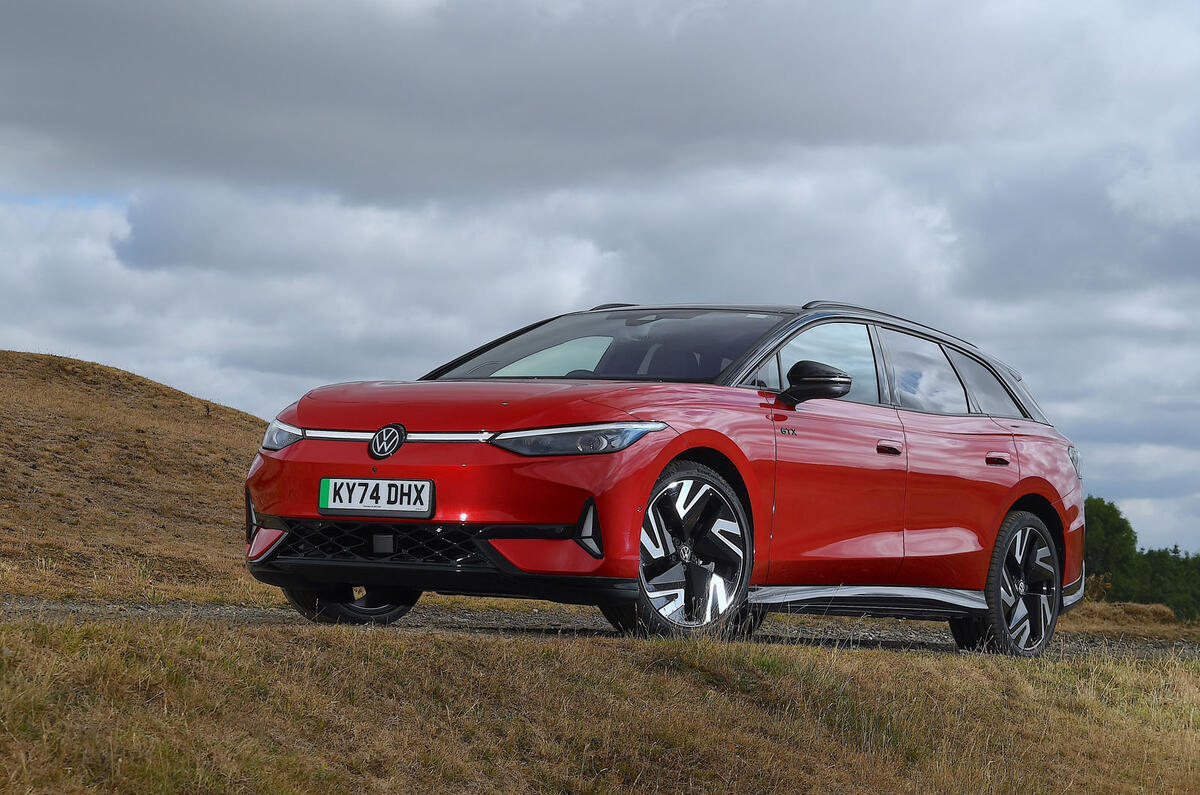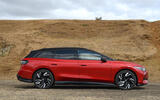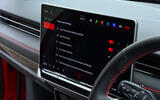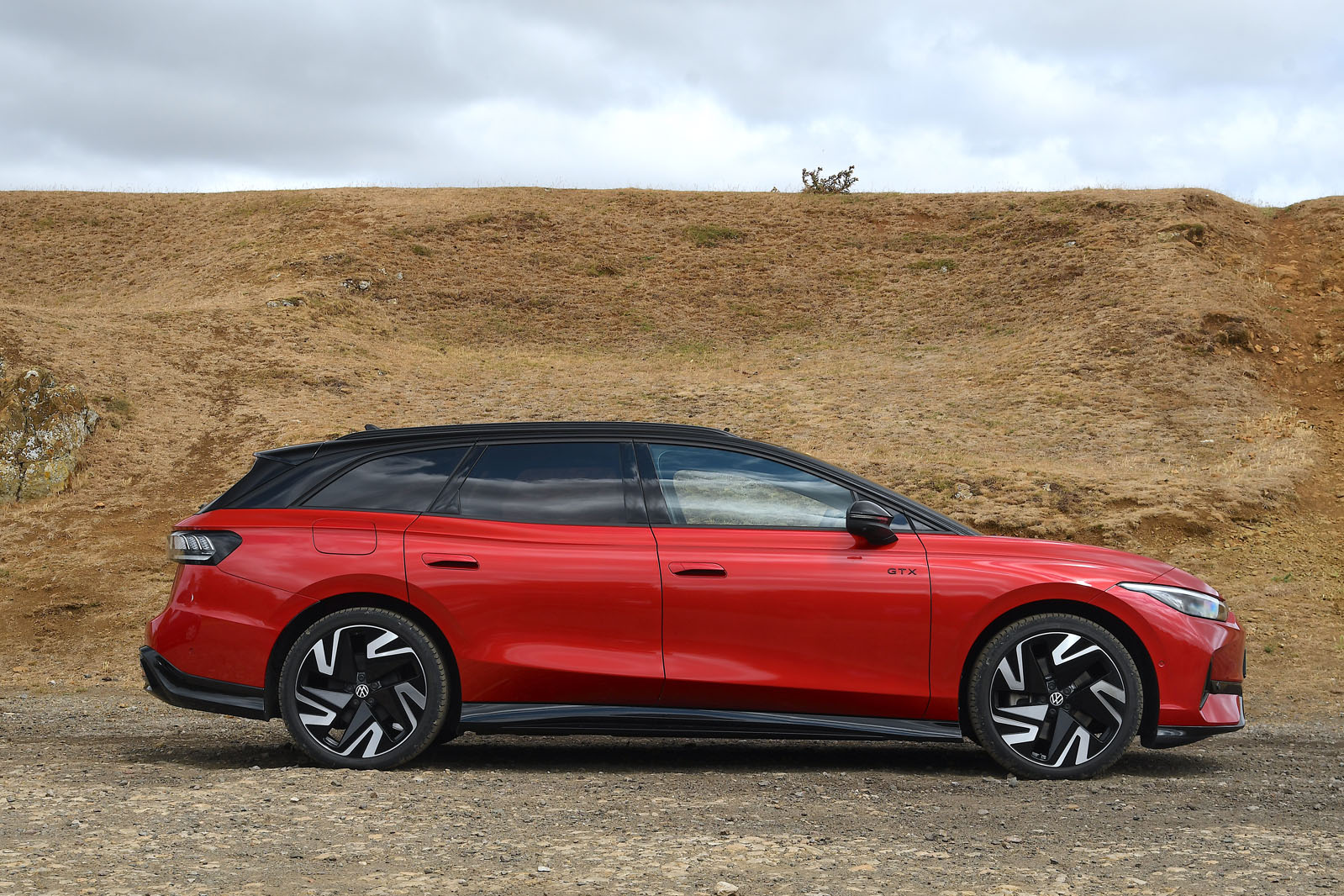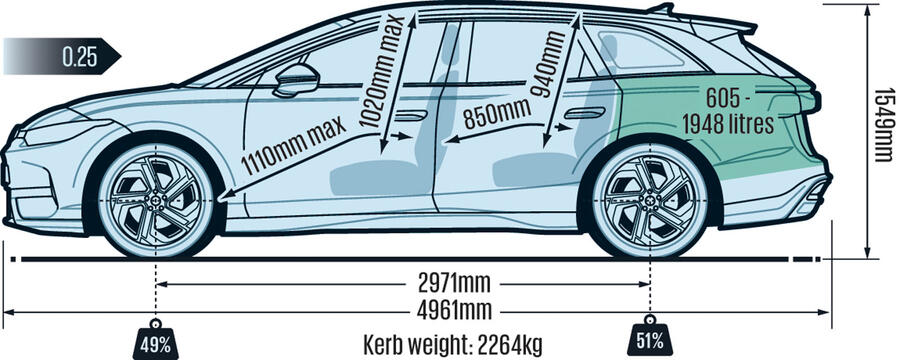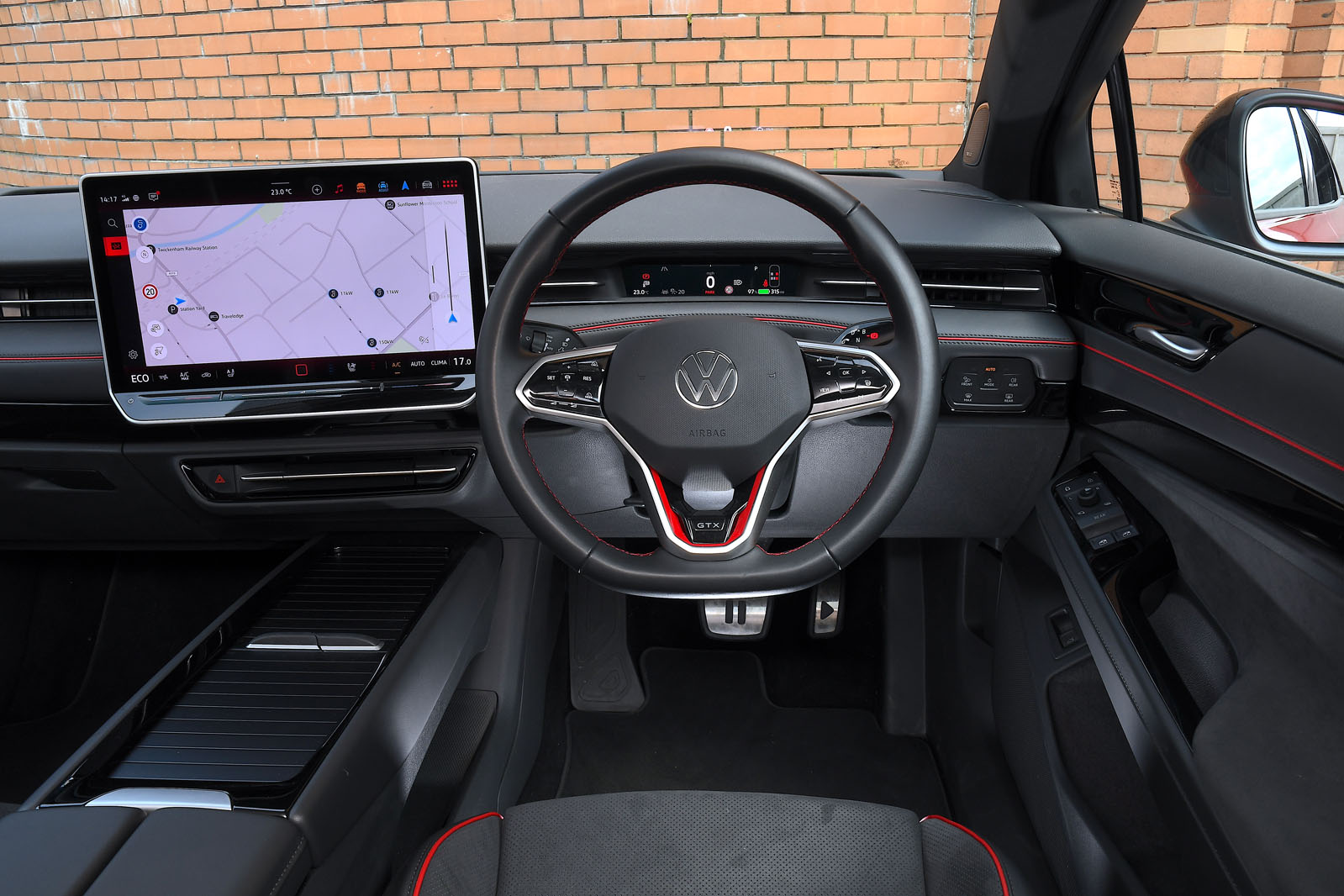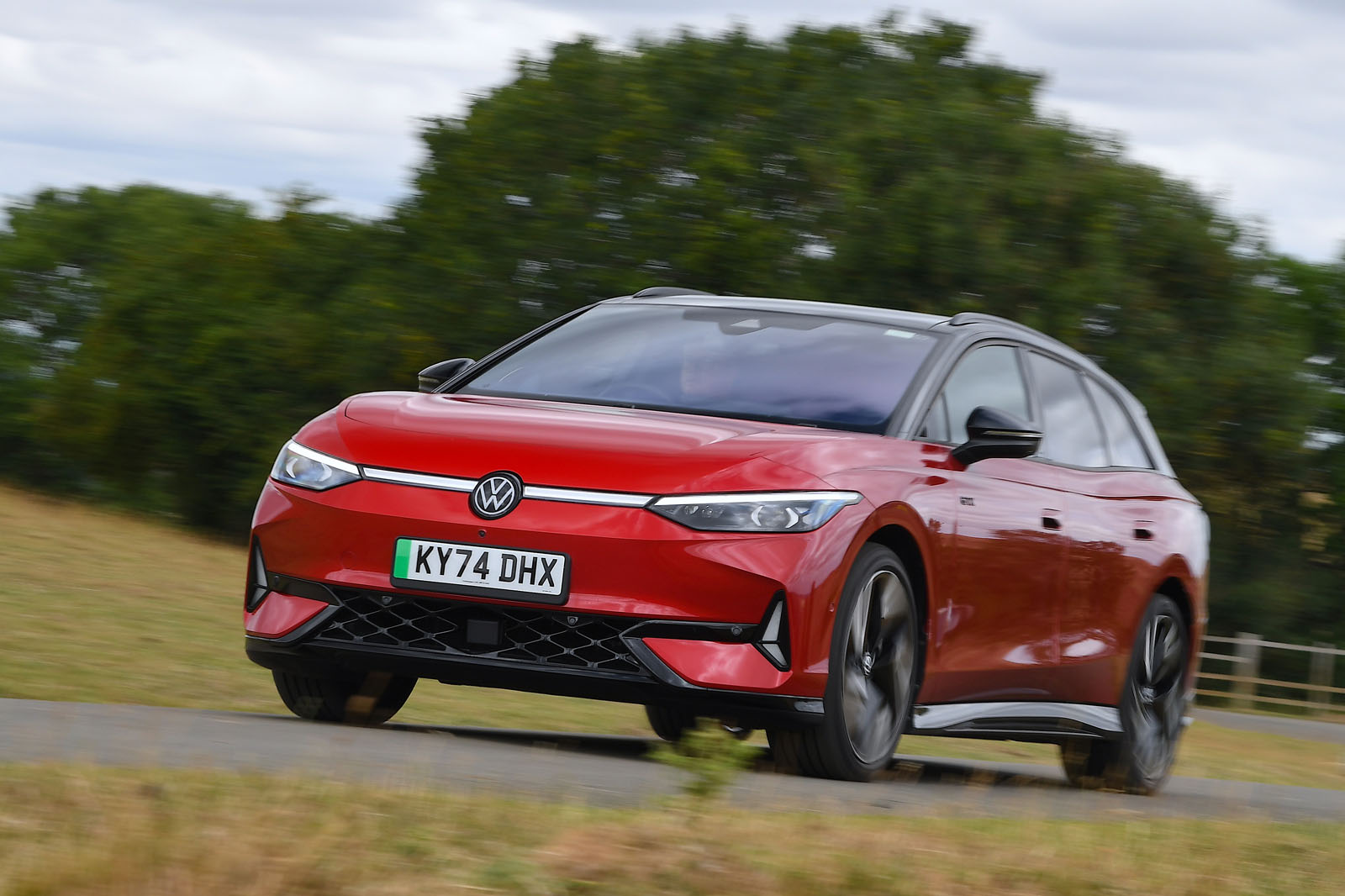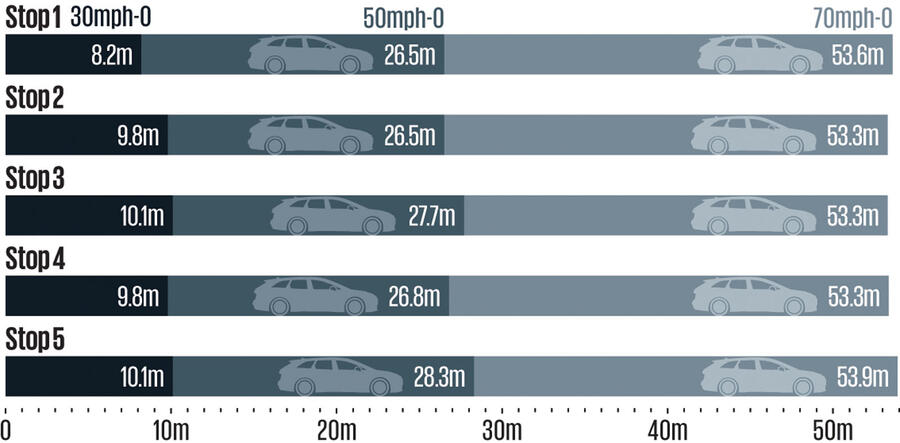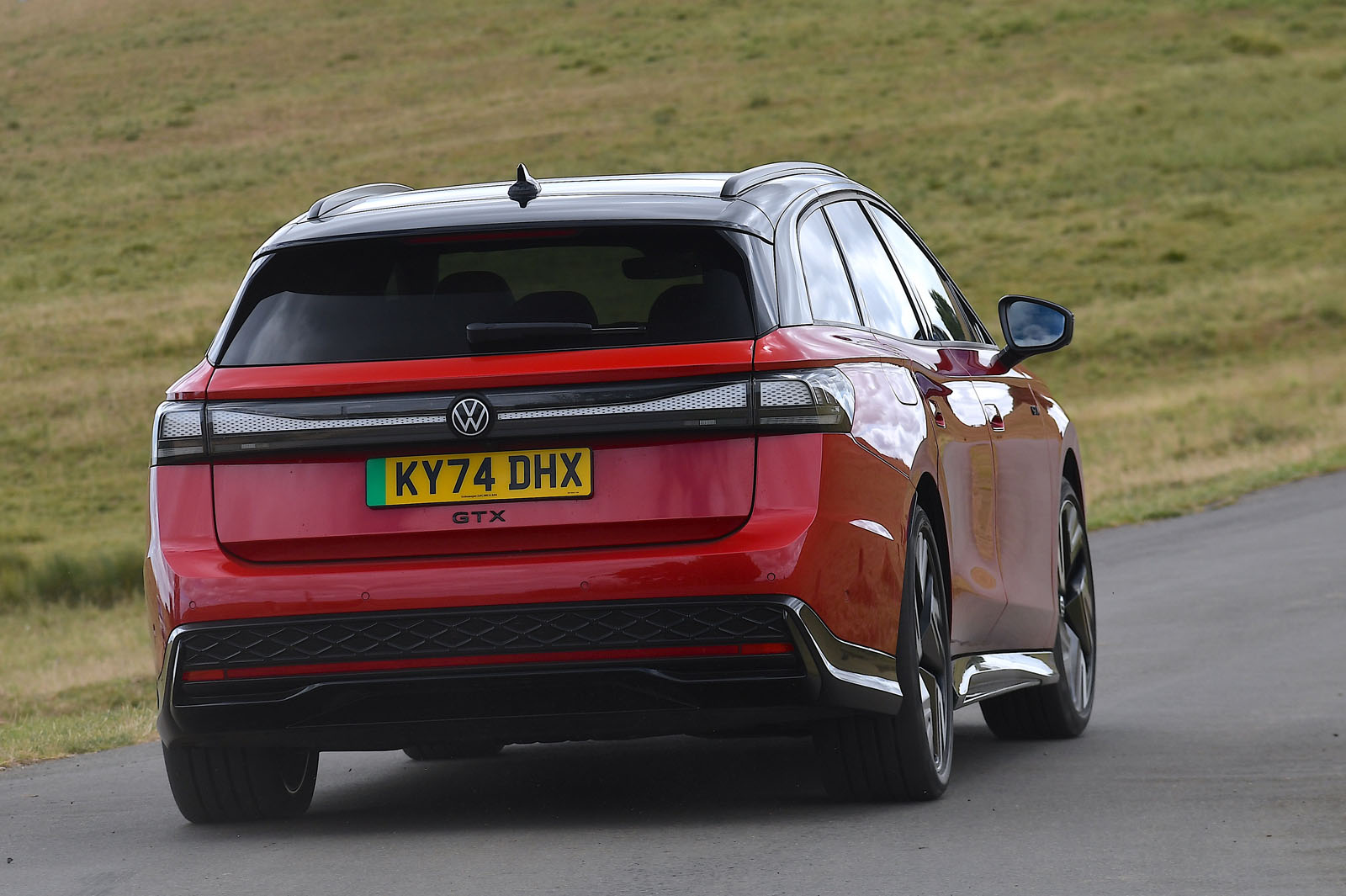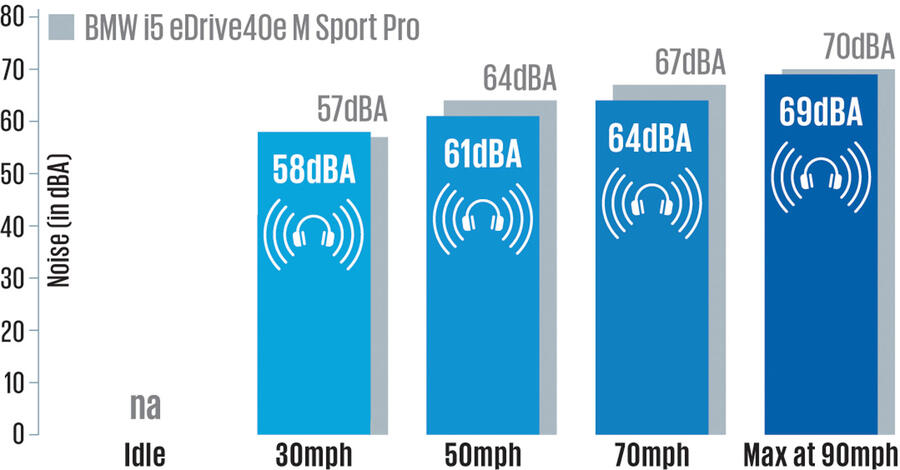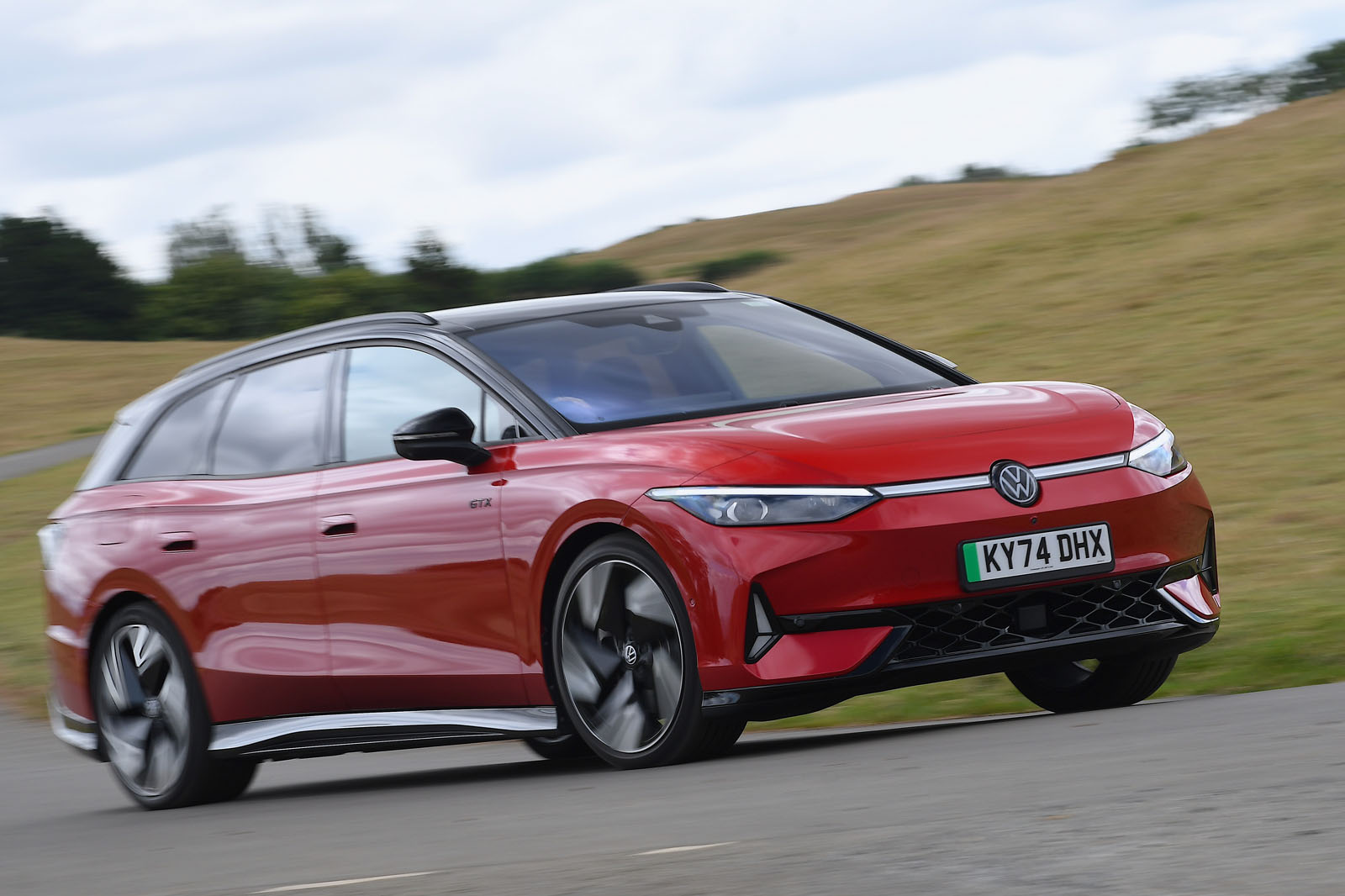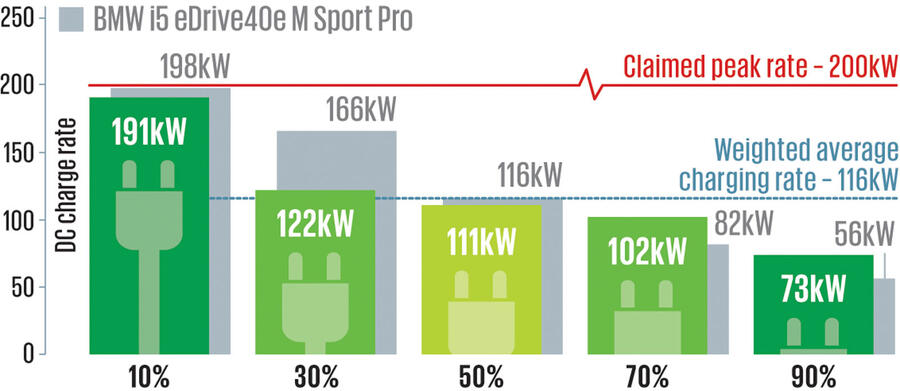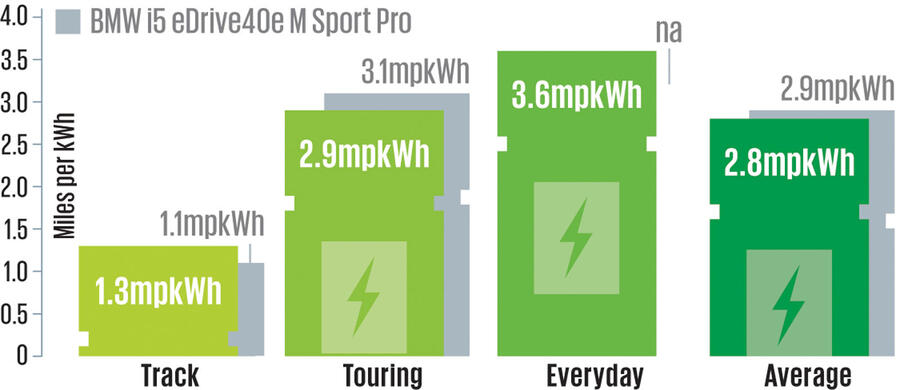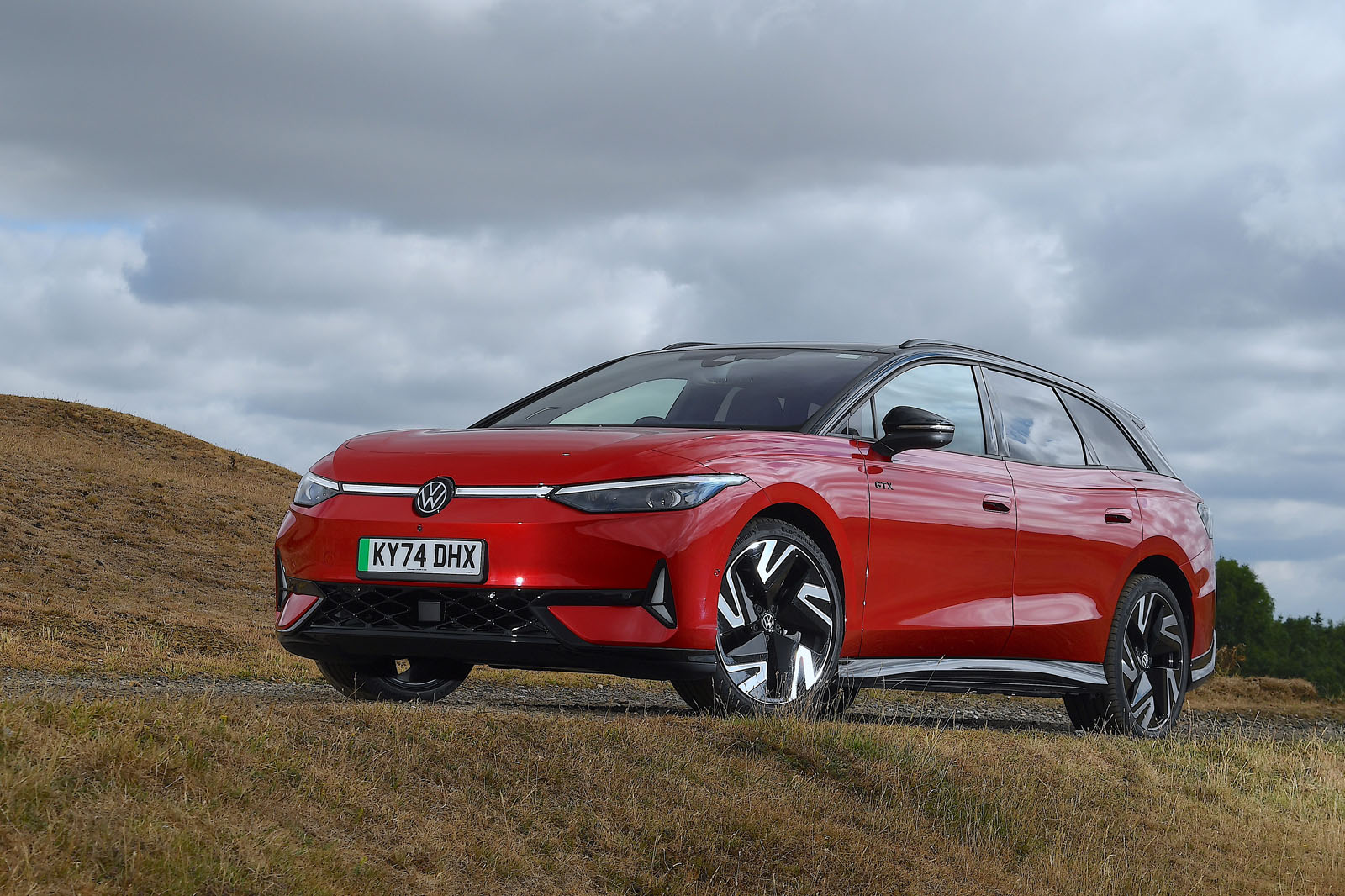Volkswagen has a long tradition of studious understatement when it comes to the interiors of its special performance derivatives, and the ID 7 GTX follows that assiduously.
Where our single-motor Pro Match road test car of 2024 had blue decorative piping for its part-leather ErgoActive front seats and across its fascia, the GTX has red. There’s GTX detailing on the seat backrests and GTX badging on an otherwise identical steering wheel.
Mostly, that’s it. Neither the car’s standard-fit downsized instrument screen nor its upsized head-up display have any special GTX design theme, nor its 15in free-standing multimedia screen. There are no secondary controls particular to the GTX version, either.
Given that one of our reservation about the regular ID 7’s interior was its slight sense of plainness relative to premium-brand opponents, you might have expected VW to have seized the opportunity to up the richness with the GTX version – but no. The car does get, as standard, the colour-selectable ambient lighting for its dashboard and door cards that other ID 7s only get as an option, but this doesn’t really make the interior stand out.
But while it may not seem very special, none of this should suggest that it isn’t perfectly agreeable, comfortable and spacious. Our test car came with VW’s electrochromatic panoramic glass roof, which added an even greater sense of space, while the back seats especially really do afford quite a lot of room to stretch out in. Rear leg room, at a typical 850mm, beats even a Mercedes-Benz EQS.
The front seats are excellent, offering great leg support and touring comfort along with ventilation and massage functions. VW’s current preference for a column shifter opens up abundant centre console storage space, which can be neatly closed off when you don’t need it. And all the amenities your daily life might require – device charging pads and ports, removable cupholders, bigger covered storage areas – are present. The sense that VW has created a cabin more for living with than cooing at is very much apparent. That, of course, is very much its style, even if much particular performance flavour is lacking.
The philosophy extends to a boot that’s more than a metre long up to the rear seatbacks, more than a metre wide at its widest, and 750mm deep with its height- adjustable floor at its lowest (Audi S6 E-tron 690mm, Skoda Superb Estate 800mm), making the load space a very useful size overall.
Multimedia - 3.5 stars
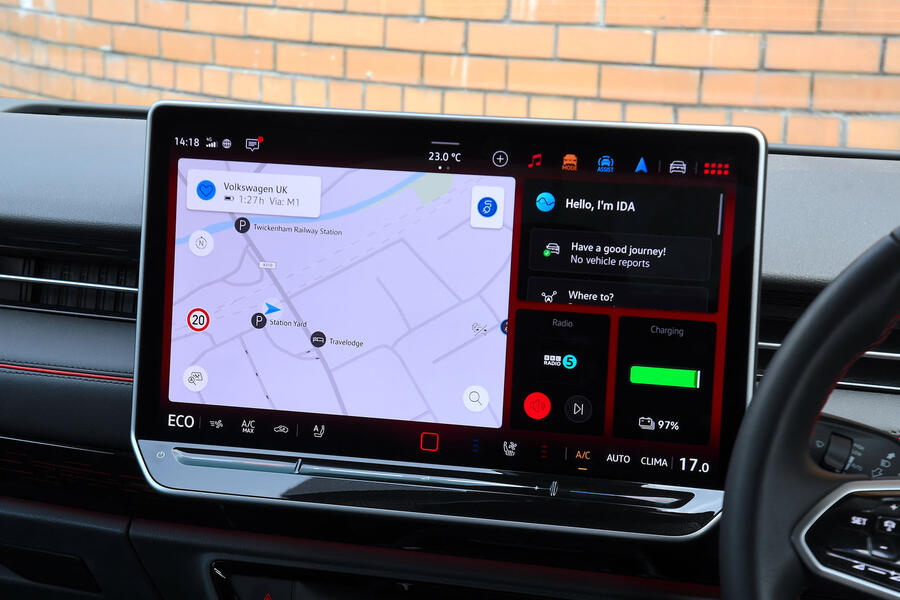
The 15in Discover Pro touchscreen infotainment screen of the ID 7 GTX retains across its lower edge the ‘touch slider’ tactile controls for the heater and volume control. Even after familiarisation, they remain unintuitive and, as the only physical controls for a system with a lot of ground to cover, still seem a strange inclusion, particularly given that there isn’t any cursor controller on the steering wheel, for instance.
There’s no option but to use the touchscreen interface. But as you do, you realise that accessibility of key functions is quite good: VW puts user-selectable shortcut icons, at a practical size, on the upper margin of the screen (so drive modes and ADAS settings are always close at hand), along with a fixed one to get directly in and out of smartphone mirroring. A home screen with a usefully flexible layout is also a welcome feature, so you’re seldom denied what information you might prefer displayed prominently.
Overall, you’d say more – and more conventional – physical controls would still be better. VW remains set on putting everything on a screen, but at least it’s finding better ways to do it over time.






